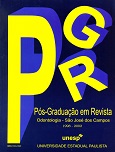Joint vibration analysis in mandibluar movements in asymptomatic volunteers
DOI:
https://doi.org/10.14295/bds.2000.v3i2.83Abstract
O ruído articular é um dos sinais de desordens temporomandibulares. Sua identificação é importante para estabelecer o diagnóstico de mudanças patológicas que ocorrem na articulação temporomandibular (ATM). Como há pouco estudos relativos a vibrações em indivíduos assintomáticos, o objetivo dessa investigação foi avaliar as vibrações durante os movimentos de abertura e fechamento mandibular. Nesse estudo, 29 voluntários assintomáticos foram submetidos ao exame clínico e ao teste de Fonseca6. Depois do exame inicial, os voluntários foram submetidos à avaliação através da eletrovibratografia (SonoPAK/I). O grupo controle foi estabelecido com cinco indivíduos selecionados nos quais foram posicionados os transdutores para gravar a vibração da ATM sem movimento mandibular. Outro grupo de gravações foi obtido com os transdutores colocados dentro de uma caixa de papelão e em meio ambiente com o mínimo de ruídos possível. Os resultados foram tabulados e notou-se que os valores aumentavam próximo ao final da abertura e final do fechamento mandibular. As conclusões foram: a) as vibrações na ATM estão presente em indivíduos assintomáticos; b) A energia de vibração da ATM é maior quando a mandíbula está próxima do final da abertura e final do fechamento mandibular; c)A energia vibratória sem movimento mandibular é menor e permanece estável durante as posições analisadas; d) O pico de freqüência esteve situado entre 56 e 99 Hertz. As freqüências analisadas neste estudo não foram detectadas pelo ouvido humano e confirma que o líquido sinovial foi realmente gravado.
Downloads
Downloads
Published
How to Cite
Issue
Section
License
Brazilian Dental Science uses the Creative Commons (CC-BY 4.0) license, thus preserving the integrity of articles in an open access environment. The journal allows the author to retain publishing rights without restrictions.
=================




























